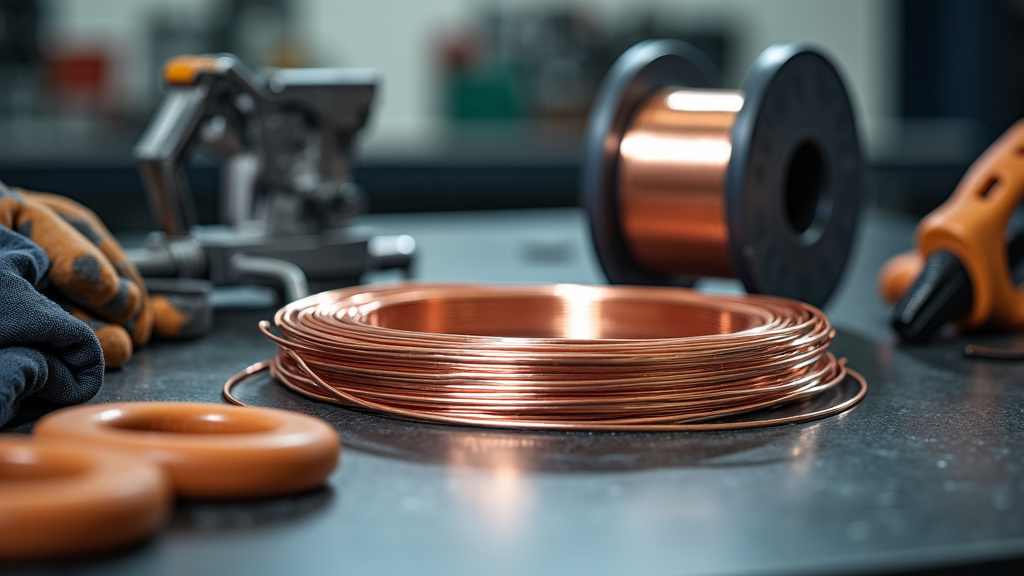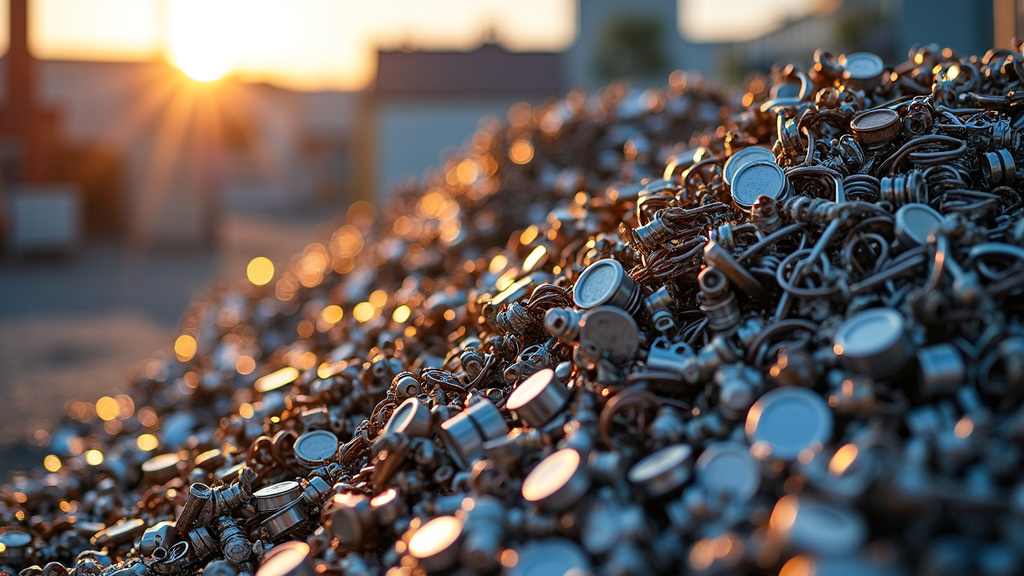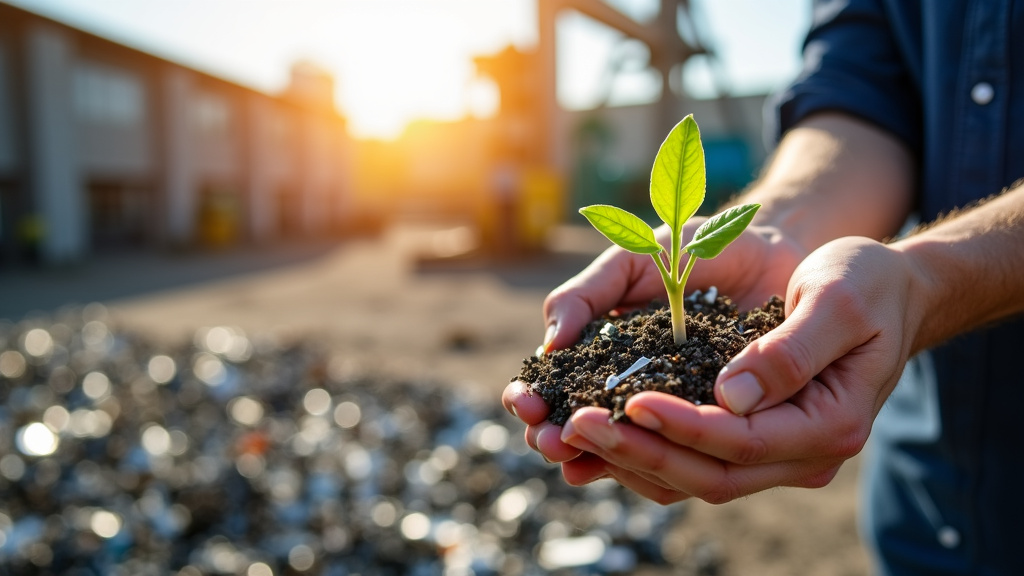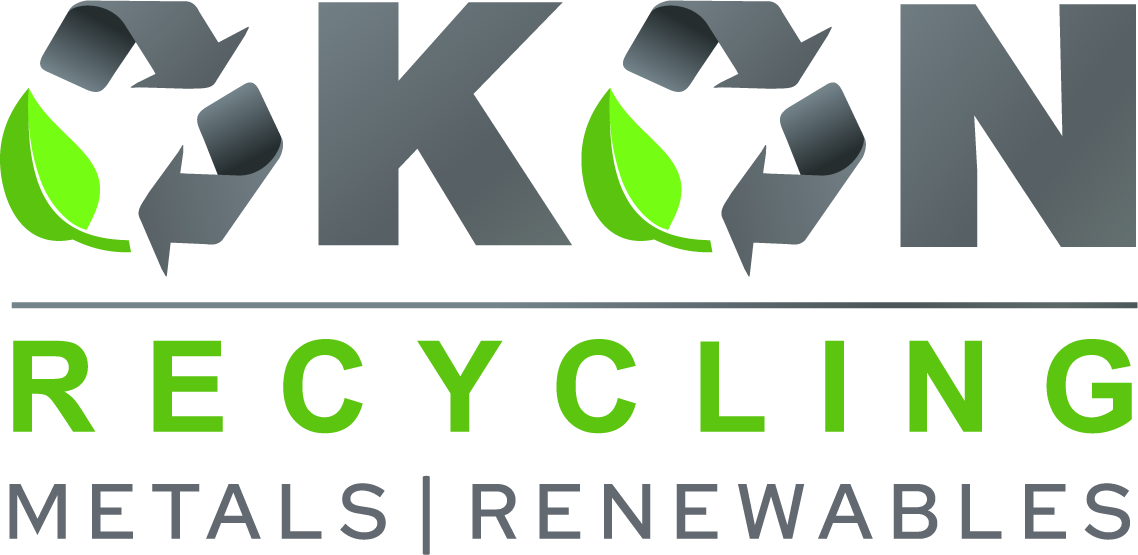5901 Botham Jean Blvd, Dallas, TX 75215
How to Prepare Scrap for Drop-Off
February 7, 2025Did you know that the average American generates about 4.9 pounds of waste per day? With such staggering numbers, proper waste management is more crucial than ever in our pursuit of a sustainable future. But here’s the real question: Are we doing enough to prepare our scrap for effective recycling?
Companies like Okon Recycling play a vital role in keeping valuable materials out of landfills and back into circulation. Specializing in industrial and commercial metal recycling, Okon ensures that scrap materials—whether aluminum, copper, or steel—are processed efficiently and sustainably.
However, proper scrap preparation starts with you. By sorting and handling materials correctly before drop-off, you maximize recycling efficiency and reduce contamination, making the entire process more effective.
Why does this matter? Well-prepared scrap speeds up recycling, reduces waste, and contributes to a greener planet. By taking small but meaningful steps in sorting, cleaning, and transporting recyclables properly, we help create a more sustainable future—one piece of scrap at a time.
So, are you ready to become a scrap preparation pro? Stick around as we dive into the best practices, tips, and common mistakes to avoid when preparing your materials for drop-off.
Organizing Your Scrap for Recycling
Picture this: You’re standing in your garage, surrounded by a jumble of metal scraps. Old appliances, bits of wire, and rusty pipes litter the floor. It might look like a mess, but with the right approach, you’re sitting on a potential goldmine. Let’s explore the art of scrap sorting and turn that chaos into cash.
The Magnetic Divide: Ferrous vs. Non-Ferrous Metals
First things first, grab a magnet. This simple tool is your secret weapon in scrap sorting. Why? Because it’s the easiest way to separate your metals into two crucial categories: ferrous and non-ferrous.
Ferrous metals contain iron and stick to magnets like long-lost lovers. Think of your old steel beams or that broken wrought-iron fence. These materials are the workhorses of the metal world – sturdy and reliable, but often less valuable in the scrap market.
Non-ferrous metals, on the other hand, play hard to get with magnets. Copper, aluminum, brass – these are the prima donnas of the scrap heap. They’re lightweight, corrosion-resistant, and often fetch a prettier penny at the recycling center.
| Type | Characteristics | Common Uses |
|---|---|---|
| Ferrous | Magnetic, contains iron, strong, prone to rust | Construction, automotive components, tools |
| Non-Ferrous | Non-magnetic, contains little to no iron, corrosion-resistant | Electrical wiring, aerospace equipment, plumbing |
Sorting Scenarios: From Junkyard to Jackpot
Let’s paint a picture. You’ve got an old refrigerator taking up space. Before you haul it off, consider this: that fridge is a treasure trove of different metals. The outer shell? Likely steel (ferrous). But the copper wiring and aluminum components inside? That’s where the real value lies (non-ferrous).
Or imagine you’re clearing out a construction site. Those steel beams are obvious ferrous candidates. But don’t overlook the brass fixtures or copper piping. By taking the time to sort these materials, you’re not just being eco-friendly – you’re potentially padding your wallet.
The Nitty-Gritty of Proper Sorting
Now, let’s talk tactics. Proper sorting isn’t just about separating ferrous from non-ferrous. It’s about creating organized categories that recycling centers appreciate. Consider investing in heavy-duty bags or bins for your smaller scraps. Label them clearly: ‘Copper Wire’, ‘Aluminum Cans’, ‘Steel Scraps’. This level of organization isn’t just satisfying – it can help you avoid penalties and maximize your payout.
Remember, recycling centers are businesses too. The more work you do upfront, the less they have to do, and the more likely they are to offer you top dollar for your efforts.
Transport Tips: From Sorting to Selling
You’ve sorted your scrap like a pro, but your journey isn’t over yet. Transporting your organized treasure requires some thought. Those heavy-duty bags we mentioned? They’re not just for storage. They’re your best friends for moving smaller scraps safely and efficiently.
For larger items, consider how you’ll secure them. A loose piece of metal flying off your truck isn’t just dangerous – it could cost you in fines or lost material. Straps, tarps, and a well-balanced load are key to getting your scrap to its destination safely and legally.
By taking the time to sort, organize, and transport your scrap metal properly, you’re not just cleaning up your space. You’re participating in a crucial recycling process, conserving resources, and yes, potentially earning some extra cash. So next time you look at that pile of metal in your yard, don’t see junk – see opportunity. Happy scrapping!
Maximizing Scrap Value Through Proper Cleaning

Ever wondered how to turn your pile of rusty metal into a goldmine? The secret lies in proper cleaning. Discover how a little elbow grease can significantly boost your scrap metal’s value and put more cash in your pocket.
Cleaning your scrap metal isn’t just about aesthetics. It’s about increasing its value and making it easier for recyclers to process. By removing coatings, paint, and non-metallic attachments, you’re presenting a purer product that commands a higher price.
Take copper wire, for instance. It’s the crown jewel of scrap metal, but only when it’s stripped bare. Stripping insulation from copper wire can boost its value by up to 50%. That’s not chump change, folks!
The Cleaning Checklist: Your Path to Higher Payouts
Ready to roll up your sleeves? Here’s a quick checklist to ensure you’re maximizing your scrap’s value:
- Remove all non-metallic components (plastic, rubber, wood)
- Strip insulation from wires (safely, using proper tools)
- Scrape off paint and coatings where possible
- Rinse off dirt and debris
- Sort your metals by type (ferrous vs. non-ferrous)
You might be thinking, “Is all this effort really worth it?” The payoff can be substantial. Clean scrap metal is not only worth more, but it’s also more efficient to recycle. This efficiency translates to higher payouts and a smoother recycling process overall.
Easy Cleaning Methods: Work Smarter, Not Harder
Cleaning scrap metal doesn’t have to be a Herculean task. Here are some tips to make the process easier:
For stubborn paint or coatings, try using a wire brush or sandpaper. It’s amazing how much difference a little scrubbing can make. Got grease or oil? A degreaser can work wonders, but even a simple solution of dish soap and warm water can do the trick.
When it comes to wire stripping, invest in a good wire stripper tool. It’ll save you time and prevent injuries from makeshift tools. And remember, safety first! Always wear gloves and eye protection when handling scrap metal.
By putting in a bit of effort to clean and prepare your scrap metal, you’re not just increasing its value – you’re contributing to a more efficient recycling process. It’s a win-win situation: more money in your pocket and a cleaner environment. So next time you’re about to haul that scrap to the yard, take a moment to clean it up. Your wallet (and the planet) will thank you!
Transporting and Storing Scrap Efficiently
Efficient transport and storage of scrap metal are crucial for maximizing recycling efforts and ensuring safety. By implementing smart organizational strategies, businesses and individuals can streamline their scrap metal handling processes, saving time and reducing risks. Explore key practices for transporting and storing scrap efficiently.
Organizing Scrap for Easy Transport
The cornerstone of efficient scrap transport lies in proper organization. Implementing effective storage solutions not only protects valuable materials but also improves operational efficiency. Start by sorting your scrap metals into categories, making the recycling process smoother and potentially more profitable.
Here are some practical tips for organizing your scrap:
- Use labeled containers to separate different types of metals.
- Invest in sturdy, stackable bins to maximize storage space.
- Keep ferrous and non-ferrous metals in separate containers to prevent contamination.
Choosing the Right Storage Solutions
Selecting appropriate storage containers is vital for efficient scrap management. For smaller operations, plastic bins can be ideal for sorting and storing different metal types. These lightweight containers are easy to move and stack, perfect for organizing various scrap pieces.
For larger quantities or industrial settings, consider these options:
- Large metal containers for bulky scrap or high-volume operations.
- Specialized, lockable containers for valuable metals like copper.
- Rack systems to maximize vertical space in storage areas.
Transporting Large Quantities Safely
When dealing with larger amounts of scrap metal, using trucks or trailers becomes necessary. Safety is paramount during transport to prevent accidents and ensure compliance with regulations. Here are key considerations for safe scrap metal transportation:
Secure your load properly using straps or chains to prevent movement during transit. Distribute weight evenly to maintain vehicle stability and avoid tipping. Always adhere to weight limits and local transportation laws to avoid fines and ensure road safety.
Maximizing Efficiency at the Recycling Center
Efficient storage and transport practices not only benefit your operations but also streamline the process at recycling centers. By arriving with well-organized, properly sorted scrap, you can save significant time during the drop-off process. This efficiency can lead to quicker transactions and potentially better prices for your scrap.
Consider these strategies to enhance your recycling center experience:
- Call ahead to confirm accepted materials and any specific requirements.
- Prepare necessary documentation in advance.
- Arrive during off-peak hours to minimize wait times.
By implementing these practices for transporting and storing scrap efficiently, you’ll not only improve your own operations but contribute to a more streamlined and effective recycling industry. Remember, proper organization and safety measures are key to successful scrap metal management.
Avoiding Common Mistakes in Scrap Preparation

When it comes to scrap metal recycling, the difference between a lucrative haul and a disappointing payout often lies in how you prepare your materials. Let’s explore some common pitfalls that could be costing you money and potentially causing issues.
The Perils of Metal Mixing
Picture this: you’ve spent hours collecting various metal scraps, only to toss them all into one big pile. Big mistake! Mixing different types of metals can significantly lower the overall value of your haul. Why? Because separating mixed metals is a time-consuming and costly process for recyclers.
Here’s a pro tip: invest in a strong magnet. It’s a simple yet effective tool to distinguish between ferrous (magnetic) and non-ferrous (non-magnetic) metals. Non-ferrous metals like copper and aluminum typically fetch higher prices, so keeping them separate is key to maximizing your profits.
But don’t stop there. Even within the non-ferrous category, it pays to sort further. Copper, brass, and aluminum should all have their own designated containers. Trust me, your local scrap yard will appreciate your efforts, and your wallet will thank you.
The Value-Draining Culprits
Not all that glitters is gold in the scrap metal world. Some materials, while seemingly valuable, can actually decrease the worth of your entire load. Coated metals are prime offenders here. That shiny chrome finish might look nice, but it’s a headache for recyclers and often leads to lower payouts.
Another common mistake? Including non-metallic components. Remember, recyclers are interested in the metal, not the plastic handles or rubber gaskets. Take the time to remove these non-metal parts before heading to the scrap yard. It might seem tedious, but it’s a surefire way to boost your scrap’s value.
The Legal Landmines of Scrap Collection
Now, let’s talk about a touchy subject: illegal scrap collection practices. It might be tempting to grab that copper wire from an abandoned building or snag some metal from a construction site, but resist the urge. The penalties for illegal dumping and theft can be severe, with fines reaching up to $15,000 per day in some states.
But it’s not just about avoiding fines. Engaging in illegal practices can get you blacklisted from reputable scrap yards, effectively cutting off your income stream. Always ensure you have the right to collect and sell the scrap you’re bringing in. When in doubt, ask for permission or documentation.
Remember, ethical recycling isn’t just about following the law—it’s about contributing to a sustainable future. By adhering to proper collection practices, you’re playing a vital role in the circular economy of metal recycling.
Concluding Thoughts: Sustainable Recycling for a Better Future

As we’ve explored, proper scrap preparation isn’t just about maximizing returns—it’s a critical step toward sustainability. By sorting, cleaning, and preparing our scrap metals, we reduce waste, conserve energy, and minimize pollution, ensuring that valuable materials are kept in circulation rather than discarded.
The impact of these efforts extends far beyond our immediate surroundings. Every piece of metal recycled reduces the need for raw material extraction, lowers greenhouse gas emissions, and preserves natural resources. This creates a ripple effect, benefiting both the environment and the economy.
But sustainability requires collective action—and that’s where companies like Okon Recycling come in.
As leaders in industrial and commercial metal recycling, Okon bridges the gap between individual efforts and large-scale environmental impact. Their expertise and commitment to responsible waste management ensure that recycled materials are processed efficiently and put back into productive use.
So, what’s your role in this movement?
Every small action counts. Whether it’s sorting metals more carefully, taking extra steps to clean your scrap, or educating others on best recycling practices, your commitment contributes to a cleaner, greener future.
Contact Okon Recycling today at 214-426-6566 to discover how industrial magnets—and responsible recycling—can drive your business toward a more prosperous and sustainable future.
